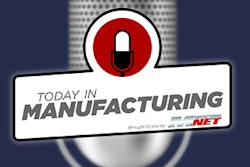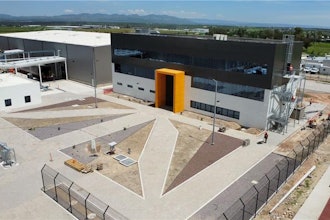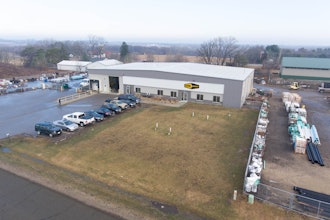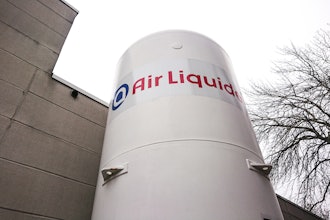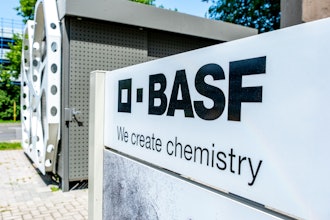
Conexiom
www.conexiom.com 1
Simple Digital
Transformation
with Conexiom
www.conexiom.com 2
Simple Digital Transformation with Conexiom
Organizational leadership can struggle to understand the tangible
outcome of digital transformation efforts and subsequently have
difficulty in determining which areas of their business are most
suitable to transform. Digital transformation is simple. It means using
digital technologies to maximize business efficiency. Approaching
digital transformation planning from this standpoint makes it easier
to commence plans for enterprise digital transformations because
the end goal and measure of success is straightforward. Where can
productivity be increased? Which business processes are the least
efficient?
A primary driver of technology advancement in digital transformation
has been a focus on improving efficiencies and productivity
in business processes. While scope and process integration
innovations have been accelerating across all industries, business
process automation continues to be a primary target of technology
investment. Where to begin implementing digital transformations
can seem daunting to industry executives.
www.conexiom.com 3
Digital Transformation can be
Simple
Examining Sales Document
Processing
Artificial intelligence, cloud computing, and
wearable technology are the primary pillars of
digital transformation. Enterprise-level projects
require substantial investment and legacy platform
upgrades in order to realize transformation goals, thus
increasing difficulty for some businesses that are not
prepared for extensive changes. There are simpler and
more cost efficient digital transformations that also
deliver efficiency gains such as optimized workflow
and improved customer experience.
Document processing is one of the most time-
consuming and labor-intensive tasks in modern
distribution and manufacturing. It requires manual
entry and provides virtually no additional return
beyond the initial sale. Automating this process can
deliver a multitude of benefits for businesses and
is one of the easiest and most cost effective digital
transformations to implement.
Business is constantly evolving and technology is
driving serious innovation. With leading retailers like
Amazon and eBay revolutionizing the B2C customer
experience, expectations can be seen spilling over
into the B2B world. Customers are demanding faster
fulfillment, more flexibility, better accessibility and
competitive pricing. As a result, modern distributors
and manufacturers find themselves looking for new
ways to deliver more customer value, as the trend is
only increasing with the penetration of e-marketplaces
in the industry.
A key task for all distributors and manufacturers is
order processing. Despite technological advances,
over 80% of orders, requests for quotes or special
pricing agreements and contracts still require manual
processing. Manufacturers and distributors rely on
expensive manpower for tasks like data entry that
provide no added value to the company.
Daily, orders arrive via email, fax, phone or are posted
to web portals for customer access, prompting a
team of customer service representatives to manually
facilitate the sales order process. Undeniably,
entering this data into a company’s ERP system is a
mission critical activity. Staying in business means
selling goods, services or some combination of the
two. Entering sales orders quickly and accurately is
essential to customer order fulfillment and overall
satisfaction. The actual process however, of staff
pounding on keyboards to re-key information is
outdated, slow and inefficient.
Often, executive leadership will have insight into
which business processes can be improved in terms
of productivity but surprisingly, the sales order entry
process is often ignored when evaluating how to
digitize and elevate the customer experience.
www.conexiom.com 4
Although many companies recognize manual
entry isn’t working well, they’re unaware of a better
alternative and that automating the process is a digital
transformation that can be easily implemented. As
orders and bid requests pour in, the first solution
is often adding a few extra hands to provide relief
to fluctuations in order volume. However, as order
volumes increase these productivity and efficiency
issues will only expand.
There are many reasons why a digital transformation
of sales document processing is vital to survival.
Manual processing has serious physical limitations.
Customer service and subsequently customer
satisfaction is only as good as the number of hands
on the team, which means incredibly high operational
costs. Expenses are only aggravated with overtime
hours. Yet trying to align demand with staffing
numbers creates hiring pressures.
Secondly, it’s fundamentally flawed. It creates a lot of
undesirable effects like bottlenecks awaiting entry,
lost or duplicate orders, delayed order cycles and even
slower payments. It also introduces order entry errors
that come with a hefty resolution price tag stemming
from rush orders to write-offs. In a nutshell, manual
processing requires an excessive level of effort to yield
slow, sub-par results.
Many types of documents that distributors and
manufacturers manually process can be digitally
transformed including purchase orders, quote
requests, and accounts payable invoices. Automation
of these processes can dramatically reduce errors and
speed up workflow, meaning increased efficiency and
ROI. The following are some examples:
Automating incoming POs not only speeds up order-
to-cash cycles, but also increases data accuracy. With
more time on their hands, customer service reps
can focus on value-added tasks such as improving
customer relationships.
Quote automation accelerates the response time
of bids and quotes to minutes, with 100-percent
accuracy. With the ability to process requests for
quotes no matter the time of day, companies gain a
competitive advantage by responding to bids around
the clock.
Automating contract management can streamline
workflow for key processes including pricing
agreements, task management, digital signature
capabilities, automated alerts, and record
management. When custom pricing is involved,
automation eliminates errors and decreases the
number of line item rejections and discrepancy
claims that are more likely to happen when keyed in
manually.
Automatically converting faxed and emailed incoming
AP invoices into payable postings, eliminates potential
errors associated with data entry. With automation,
companies can capitalize on early payment discounts,
and prevent duplicate payments. It also allows AP
staff to focus on other important tasks like addressing
supplier requests.
How Manual Processing
Affects your Bottom Line
Benefits of Digitally Transforming
Document Processing
www.conexiom.com 5
Most customer service representatives are overwhelmed processing orders. It takes a lot of time and effort to stay
on top of order volumes especially during peak season. By automating document processing, companies can free
up time and increase productivity by automating repetitive tasks.
CSR teams can free up to 95% of the time previously dedicated to manually processing customer orders. It makes
it possible for companies to maintain a competitive edge by leaving more time for actual customer service,
exception handling, and problem solving. CSRs can devote time to demonstrating their deep product knowledge
and providing recommendations to customers.
Ultimately digitally transforming this area of the customer experience makes time for revenue generating tasks and
improving customer satisfaction, employee satisfaction and the bottom line.
Generating Growth by Redefining Customer Service
866-860-3388 [email protected]
About Conexiom
Conexiom® allows manufacturers and distributors to eliminate manual entry associated with the processing of
business documents through its 100% accurate automation solutions. Developed by ecmarket, Conexiom is a
cloud-based solution that doesn’t require customers or their trading partners change the way they do business.
Customer service and inside sales teams rely on Conexiom to effortlessly capture and convert POs, RFQs, pricing
agreements, and other sales documents and transform them into an electronic format that can be delivered
into their organization’s ERP system with 100% accuracy. As the fastest and most accurate automation solution,
Conexiom is uniquely positioned to prevent costly keying errors, improve productivity, reduce costs, and accelerate
order-to-cash cycle times.
For distributors and manufacturers, manually keying in documents like purchase orders wastes considerable
time and offers no incremental value to their business. By digitally transforming these operational inefficiencies,
companies can lower their cost to serve while improving productivity and customer satisfaction. Conexiom helps
organizations across the globe maintain a competitive edge and focus on driving growth.
For more information visit www.conexiom.com







